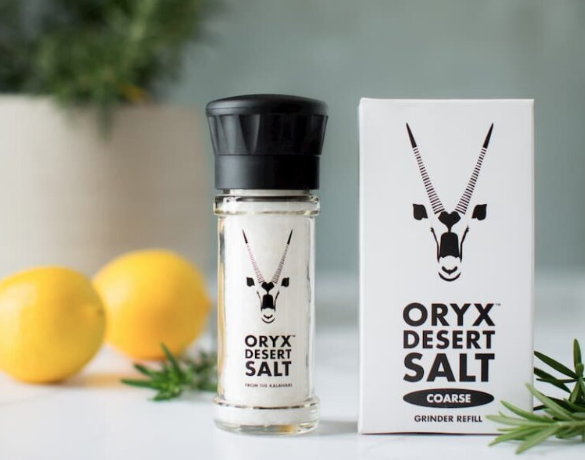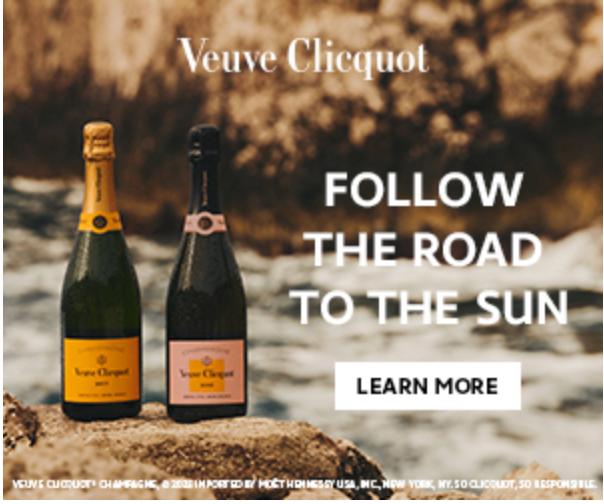Oryx Desert salt brings Taste, Health and Social Good to Your Gourmet Experience
Oryx Desert Salt Taste
In the crowded world of salts and condiments, Oryx Desert Salt is working hard to separate itself from the crowd and more and more people are noticing.
Come have a taste and a closer look….
Oryx Desert Salt has a heightened taste, even when compared to other gourmet options. Subtle, yet bold. It adds a zest to the bite while being gentle on your palate. A finishing salt who’s magic is pulling out an extra bit of dimension from most dishes.
Advertisement

I tried it on poultry, rib eye and salmon. Bringing out the juice and flavor. Each time the taste was noticeably enhanced.
With its distinctive flavor profile using less salt will achieve that enhanced flavor and Oryx is still going, creating more exclusive flavored salts for exciting new taste experiences

So far I’ve only sampled their white salt, but judging by that experience, I’d LOOOVE to try their variety.
“Salt is the smallest ingredient in any meal yet it has the biggest impact”
Oryx Desert Salt’s Flavors
SMOKED SALT – cold smoked over French Oak shavings
WINE SALT – soaked in Shiraz red wine and sundried
BRAAI/ BBQ SALT – free from additives, flavourants, preservatives, wheat or gluten fillers.
Oryx Desert Salt’s Health Benefits
Oryx Desert Salt has all the essential minerals and trace elements that exist naturally in salt, including magnesium, zinc and potassium.
It’s 100% pure, crystal-white, natural desert salt. Sun-dried, unrefined, no additives, no anti-clumping agents, no preservatives. Dried by the hot African desert sun.

Why is this important? To really understand, let’s put on our science lab coats and get into the specifics.
There are two elements of salt – sodium and chloride – and they each play vital roles to your healthy body.
Sodium helps your nervous system, controls your taste, smell and touch, helps your muscles (and heart) work and helps your brain talk with the rest of your body.
Chloride is key for digestion and helps keep your blood moving.
Okay, science class is over.
But, yeah, that’s how important salt is to us. And how important Oryx Desert Salt recognises their role.
Some of us, honestly, haven’t put that much thought into what kind of salt we’re using. And now we know we should.
The Oryx Desert Salt Story
Back in the Summer of 2020 inspiration struck CEO / Founder Samantha Skyring when she took a 7 day walk through South Africa’s Namib Desert.
During the journey, she had several up-close encounters with Oryx Gazella (large antelopes) and learned the Oryx go a lifetime without drinking water.
How do they survive it?
The salt plays a big part. The animals get the necessary minerals and trace elements vial by licking native salt.
If you look on Oryx Desert Salt’s packaging, you’ll notice the Oryx, with its striking coloring and presence, because became the symbolic icon for Oryx Desert Salt.
Oryx Desert Salt Cares About Our World
They support small, local businesses, build partnerships and advocate for eco-awareness.
Oryx Desert Salt believes in impact sourcing which is choosing to source locally where possible and supporting small, often women-owned businesses.
They also work to build collaborative relationships (from their chefs, cooking schools and beyond) seeing them as valued ambassadors.
Their cotton bags, aprons and shopper bags are manufactured by a women’s home industry community group.
They partner with organizations like the Ukama Foundation, Macassar Pottery, Khomani San and Mier communities who own !Xaus Lodge in the Kgalagadi Transfrontier Park in the Kalahari Desert.
Where To Buy
Available at Whole Foods throughout the county, on Amazon and on their website here.



